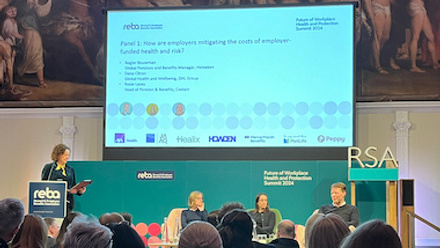Important benefit changes to income protection

A recent employer seminar Aon held found that only 1 in 10 were well briefed on the changes that came into force on 6 April, so if you were not fully informed you are in good company.
The government is paring back some of its hand outs to those who cannot work due to illness or injury and this means employers could be liable to make up the difference where a GIP claim is paid from 6 April.
What the shortfall covers
The shortfall covers those people off work and are classified by the Government as being in a ‘Work Related Activity Group' (WRAG). Such people have received an Employment and Support Allowance (ESA) payment from the state, plus a Work Related Activity Component (WRAC), but from 6 April they only get the ESA. More details can be seen here on this Parliament update to the new legislation.
The majority of GIP schemes have an automatic ‘ESA + WRAC' offset in the benefit design. This means the GIP benefits insured may automatically increase to correspond with the reduced State benefit offset. So, there will be an increase in insurance costs for employers.
Possible impacts
Schemes with a large element of lower paid members could see a larger proportionate impact on their overall insured benefit. Or they also have the potential risk of employees asking for the money they expected from the State.
Speaking on this latter point Catherine Stait, principal – risk benefits technical lead of Aon Employee Benefits, says: “This could arise where claimants receive less benefit from the State, particularly as a result of the forthcoming change and look to the employer to top up the difference where the GIP benefit design still references the previous higher automatic state offset.”
She adds: “This is clearly an HR headache, and even if past Financial Ombudsman rulings have resulted in any such top-up being sought from the insurer, not the employer, this may not always be the case.”
It is our long-held view that having deductible State benefits automatically included in a GIP benefit design is confusing and outdated and the reduction from 6 April provides the perfect opportunity to review GIP design especially as the insurance market has differing default stances which will be put in place unless employers make a decision.
Stait says: “We suggest employers make an informed choice and use this situation to reconsider other relevant issues, such as whether benefit design is aligned to return to work processes and strategies or whether the benefit cease age is still appropriate.”
Further complications
It is worth pointing out that another complication for GIP from 6 April is the significant reduction in the tax advantages of salary sacrifice. This affects cover regarded as an Optional Remuneration Arrangement including premiums an employee pays via salary sacrifice under flex and voluntary arrangements.
The change means these premiums will now be subject to employee income tax and employer National Insurance Contributions at the input stage, although employee National Insurance Contribution savings will remain. Previously, income tax and National Insurance contributions were only paid via payroll at the output stage in the event of a GIP claim, which now means there is the unpalatable possibility of dual taxation.
This article was provided by Aon Employee Benefits.







